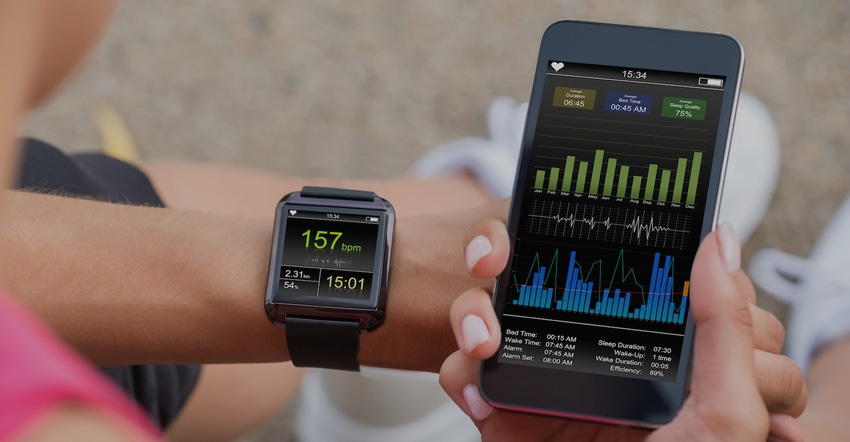Remote monitoring of patients is evolving to the point where clinicians can access tangible AI-driven insights and boost medical outcomes earlier in the progression of disease.
June 7, 2021

By Christine Parizo
As with other businesses and professions, technology is changing the way clinicians practice medicine.
From the telehealth boom during the pandemic to remote care, new health care models emerge every day. Now, with artificial intelligence and IoT devices being introduced into clinical settings, patients and physicians alike will experience care in a very different way, including taking a more preventative approach to health care.
The COVID-19 pandemic drove a lot of technology innovations in health care. According to MIT Technology Review, AI was partially responsible for the record speed in developing vaccines for the virus. Models sorted through subcomponents making up the outer proteins of the virus, predicted which subcomponents would most likely produce a response from the immune system, and helped researchers design targeted vaccines.
But that’s only the beginning. Combined with remote monitoring of patients, preventative care can be offered to improve the quality of lives. AI can also help clinicians and researchers predict adverse events and identify the next pandemic.
Combining AI And Remote Monitoring of Patients For Better Outcomes
Remote monitoring of patients has been gaining traction, particularly for chronic conditions. Initially, the goal was to replicate some of the outcomes from in-person settings, according to Ben Forgan, founder and CEO of Hologram.
However, patients and health care providers are now connected more frequently. Remote monitoring of patients is evolving to the point where it augments the in-office or hospital experience, Forgan said. This can drive better outcomes after patient discharge, or managing chronic conditions. All of this leverages some AI and machine learning.
“It’s kind of an interesting analogy with predictive maintenance,” Forgan said, “It’s now going on for the machines of the human body.”
AI can also present data to clinicians in an actionable way, according to Dr. Jay Anders, an internist and CMO of Medicomp Systems. For example, a patient may have multiple conditions and multiple physicians treating them, with no real way to isolate symptoms from one doctor or another. AI can filter out irrelevant data and present all information relating to, say, macular degeneration, to assist with treatment, he said.
More Efficient Service Delivery
Employers and payers typically want health care providers to be more efficient at delivering services. Using remote monitoring of patients and AI can not only improve outcomes but also make it more cost-effective to treat patients, according to Angela Lanning, ITS chief operating officer at Premier, Inc.
Any kind of medical device that a patient is using remotely can also alert providers and give the patient immediate feedback on what to do, which can help avoid ER visits. For example, a patient with COPD on oxygen may not need to go to the hospital every time oxygen levels slip, she said.
Monitoring Overall Health
The wearable trend could also leverage AI to introduce new health care models. With so many smart watches and other health trackers being used by consumers, if patients are willing to share their data, it can help providers identify potential health risks, Lanning said.
“We’ve heard about (smart watches) saving people’s lives because their heart rate was irregular, it alerted their phone, and they went to the hospital,” she said. “These wearables are on us tracking our health, and they would be a great addition to all the other information in medical records.”
However, one big barrier to overcome will be patient privacy, along with patients’ willingness to share data from their wearables with health care providers. Lanning noted that younger generations may be more open to data sharing.
“We haven’t even touched the surface with how (wearables) will change the way we deliver health care,” she added.
Leveraging Digital Twins in Treatment
AI allows for the production of digital twins, which are an unlimited number of copies that let different variables be tested, according to Sofia Morazzo, Ph.D. student in cancer research. “In medicine and research, the digital twins can provide much faster and effective options for specific treatment,” she said, noting that some countries have started developing their own consortia of digital twins.
Digital twins can be used to model diseases for specific individuals or for an entire society, if researchers want to look at it from an epidemiological standpoint. AI can then analyze patient-related and other data, determine risk factors and biological age, and with infectious diseases, identify high-risk patients, Morazzo said.
Improving Vision with AI
One application for AI in the future is eye surgery, which requires a great deal of precision. Using AI-controlled machines, ophthalmologists may be able to perform surgery for cataracts, glaucoma, myopia, hyperopia, and astigmatism at a lower cost, according to Dr. Waqas Ahmad Buttar, a family physician and health care administrator.
AI could also be used to diagnose retinal disease. One company is already developing a tool that will use machine learning algorithms to identify symptoms and record data that clinicians can use for diagnostics, he noted.
Ultimately, AI will open up new ways of caring for patients, inside and outside the clinical setting. It will allow health care providers to improve outcomes and treatment plans, and possibly lower costs for patients and payers.
You May Also Like
.jpeg?width=700&auto=webp&quality=80&disable=upscale)
.png?width=700&auto=webp&quality=80&disable=upscale)



.png?width=300&auto=webp&quality=80&disable=upscale)
